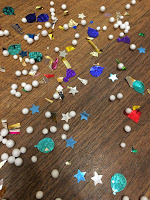When you find play in everything you do. I took a stroll out in the park and look what an interesting thing I found. My 11 year friend with Aspergers Sydrome called it abandoned wheels. I called it a rusted pulley, or wheels of the cart. This piece of art was very old. It seemed to have stood their thru summer, winter, autumn and spring. The most interesting bit was we used it to play. But how will we play with this heavy, rusted, soiled pair of wheels???
We both placed one foot each on one wheel each. We then tried to coordinate our foot movements. And as we reached the 6th count we are getting a grip of each other’s speed. There is more to go!! My dear friend wanted to continue this foot play. But why?
After some time of practice we were much better coordinated. My friend wanted to continue because he felt his calf muscles were getting stretched and it was a good exercise. So we continued. This is one of the activities that we did and he wanted to continue willingly. We enjoyed it thoroughly. We talked about so many things while we stood their exercising our legs.
As we reached the final lap We were faster. It was fun!!

#valueofplaying #exercise
#playmakesmestrong #loveforplay #joy #coordinatedmovementswithpeer #associativeplay #socialcontinumofplay #valueofplay #moreplay #coordinated movement #peers #aspergers #ASD #spectrum #wheels #wheelsofthecart #rustedpulley #abandonedwheels #whyplay #associativeplay #socialcontinumofplay #playingtolearn #learningtoplay #innovation #creativity #together #play #fun #learn #playissurvival



